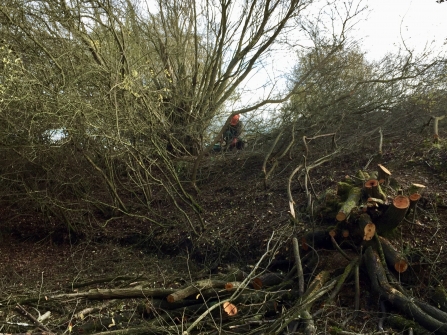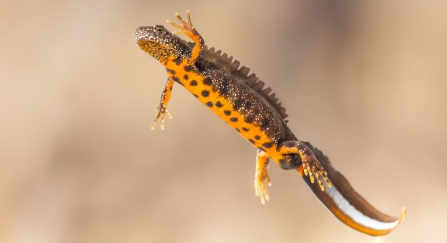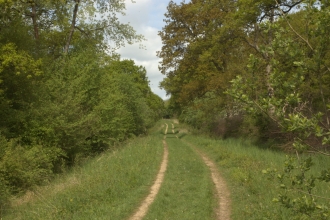Ponds are great for wildlife and can be incredibly diverse. Dig a hole in the ground and then sit back and watch nature take its remarkable course.
Once rainwater and groundwater begin pooling in this hollow, amphibians and invertebrates rapidly move in to breed, birds come to bathe and feed, grass snakes to hunt and over time, through natural colonisation, vegetation appears.
Venture out onto the meadows at Finemere Wood and you will see this in action.
In June of this year, three ponds were carved out on the edge of the meadow by the South Midlands Newt conservation partnership. They should provide a really excellent habitat, in the coming years, for many creatures and in particular for the great crested newt (Triturus cristatus).




